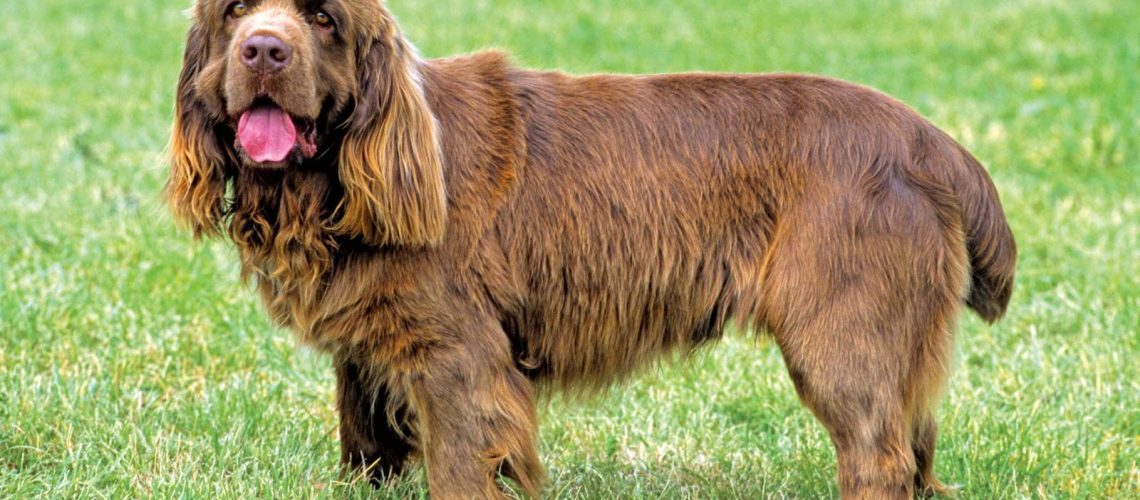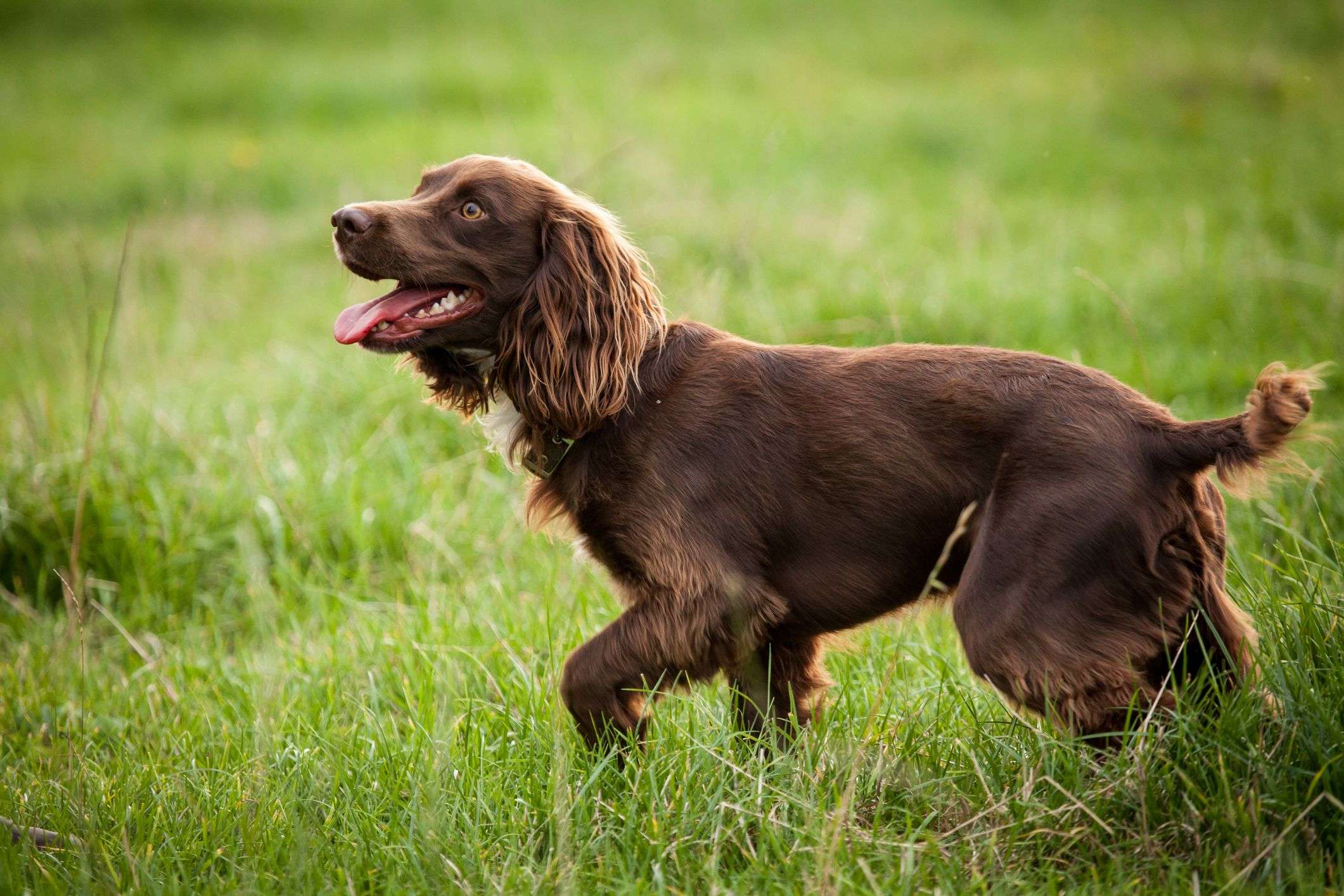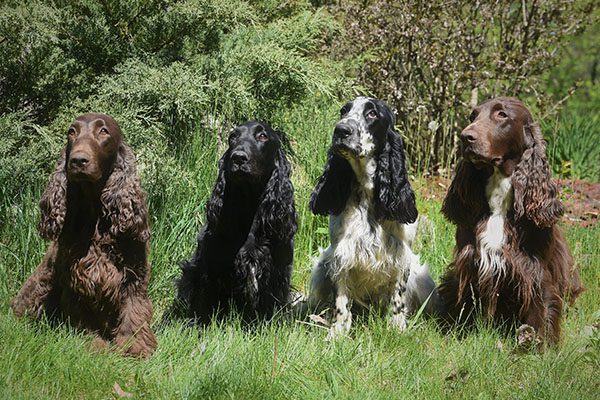Key Takeaways:
- Sussex Spaniels are a rare and low-energy dog breed, making them suitable for apartment living or homes with limited space.
- They have a friendly and gentle temperament, making them great family pets and good with children.
- Sussex Spaniels require regular grooming due to their long, wavy coats. This includes brushing, bathing, and occasional trimming to maintain their appearance.
- Regular exercise is important for Sussex Spaniels to prevent obesity and keep them mentally stimulated. Daily walks or playtime in a secure area is recommended.
- Due to their hunting instincts, Sussex Spaniels may have a tendency to wander off if not properly trained and supervised. Training should include recall commands and leash manners.
Are you a dog lover? Do you find yourself constantly curious about different dog breeds and their unique characteristics? Well, get ready to embark on an exciting journey into the world of the Sussex Spaniel! This captivating breed is not only incredibly adorable but also possesses a wealth of fascinating traits that make it stand out from the pack. By understanding the distinct characteristics and proper care for this breed, you'll gain valuable insights that can enhance your overall knowledge of dogs and potentially even help you become a better pet owner. So, let's dive in and explore everything there is to know about the delightful Sussex Spaniel!
What is a Sussex Spaniel and what makes it unique?
A Sussex Spaniel is a breed of dog that originated in England. It is known for its distinctive appearance and friendly nature. The Sussex Spaniel has a medium-sized body with a long, low-set back and short legs. Its head is large and square-shaped, with droopy ears and expressive eyes. The coat of a Sussex Spaniel is dense and wavy, usually in shades of golden liver or golden red.
What makes the Sussex Spaniel unique is its temperament. It is known to be gentle, patient, and affectionate. This breed gets along well with children and other pets, making it an ideal family companion. Sussex Spaniels are also known for their loyalty and devotion to their owners.
How does a Sussex Spaniel look different from other dogs?
The Sussex Spaniel has several distinct physical features that set it apart from other dog breeds. One noticeable difference is its long, low-set back, which gives it a unique silhouette. Its short legs contribute to this low-to-the-ground appearance.
Another distinguishing feature of the Sussex Spaniel is its head shape. It has a large, square-shaped head with droopy ears that hang down on either side of its face. This gives the breed an adorable and expressive look.
Sussex Spaniel Physical Features:
- Medium-sized body
- Long, low-set back
- Short legs
- Large, square-shaped head
- Droopy ears
- Dense and wavy coat in shades of golden liver or golden red
What is the typical temperament of a Sussex Spaniel?
The typical temperament of a Sussex Spaniel can be described as gentle, patient, and affectionate. This breed is known for its friendly nature and gets along well with children and other pets. Sussex Spaniels are loyal and devoted to their owners, making them excellent family companions.
However, it's important to note that every dog is an individual, and there can be variations in temperament even within the same breed. Early socialization and training are essential to ensure a well-behaved and balanced Sussex Spaniel.
How much exercise does a Sussex Spaniel need every day?
A Sussex Spaniel needs moderate exercise on a daily basis to keep it healthy and happy. This breed enjoys leisurely walks, playtime in a securely fenced yard, or engaging in low-impact activities such as swimming or gentle hikes.
It's important not to overexert a Sussex Spaniel due to its body structure and potential for weight gain. Regular exercise combined with mental stimulation through interactive toys or training sessions will help keep this breed physically fit and mentally stimulated.
Are Sussex Spaniels easy to train? What are the best training methods for them?
Sussex Spaniels are generally intelligent dogs that can be trained with patience, consistency, and positive reinforcement techniques. They respond well to reward-based training methods such as treats, praise, and playtime as motivation.
When training a Sussex Spaniel, it's important to keep sessions short and engaging to maintain their interest. Breaking down commands into simple steps and using consistent cues will help them understand what is expected of them.
Tips for Training a Sussex Spaniel:
- Start training from an early age
- Use positive reinforcement techniques
- Keep training sessions short and engaging
- Be consistent with commands and cues
- Praise and reward good behavior
- Avoid harsh or punishment-based methods
What kind of grooming does a Sussex Spaniel require?
The Sussex Spaniel has a dense and wavy coat that requires regular grooming to keep it in good condition. Weekly brushing is recommended to prevent matting and remove loose hair. Paying extra attention to the feathering on the ears, legs, and tail is important.
Bathing should be done as needed, typically every two to three months, using a dog-specific shampoo. Regular ear cleaning, nail trimming, and teeth brushing are essential parts of their grooming routine.
Grooming Tips for Sussex Spaniels:
- Brush their coat weekly to prevent matting
- Clean their ears regularly to avoid infections
- Trim their nails when they get too long
- Brush their teeth regularly for dental hygiene
- Bathe them every two to three months or as needed
- Visit a professional groomer if needed for assistance
Tips for taking care of the health and well-being of your Sussex Spaniel:
To ensure the health and well-being of your Sussex Spaniel, it's important to provide proper nutrition, regular exercise, veterinary care, and mental stimulation.
Tips for Taking Care of Your Sussex Spaniel:
- Feed them a balanced diet recommended by your veterinarian
- Provide fresh water at all times
- Engage them in daily exercise and mental stimulation
- Schedule regular veterinary check-ups and vaccinations
- Keep their living environment clean and safe
- Monitor their weight to prevent obesity
Taking care of a Sussex Spaniel involves providing love, attention, and a nurturing environment. With proper care, this breed can live a happy and healthy life as a beloved member of your family.
In conclusion, the Sussex Spaniel is a friendly and gentle dog breed that requires regular exercise and grooming. With their loving nature and low maintenance needs, they make great companions for families or individuals looking for a loyal and laid-back pet.
Do Sussex spaniels bark a lot?
The Sussex Spaniel is known for being one of the most talkative among spaniels, often barking and howling, especially when left alone for long periods. They can also take longer to be fully trained for housebreaking.
How much exercise does a Sussex Spaniel need?
The Sussex Spaniel requires around 20 to 30 minutes of exercise every day to maintain optimal health. He particularly enjoys going on long walks or hikes, especially in wooded areas where he can engage in bird hunting.
Why are Sussex spaniels so rare?
Despite being one of the earliest breeds acknowledged by the American Kennel Club and the UK Kennel Club, the Sussex spaniel experienced a significant decrease in popularity by the 1940s. Breeding of the breed was actively discouraged during World War II. However, thanks to the efforts of breeder Joy Freer, the Sussex spaniel was rescued from the brink of extinction.
What spaniel has the least health issues?
English Springer Spaniels are generally in good health and rarely experience serious health problems. Their average lifespan is typically between 12 and 14 years.
Are Sussex Spaniels easy to train?
The Sussex Spaniel can be easily trained and is usually cooperative as long as positive reinforcement is employed. It is crucial to be patient and give praise during training sessions.
Which is the calmest spaniel?
Clumber Spaniels are known for their excellent hunting abilities and their loyalty as companions. They are considered one of the more relaxed breeds within the Sporting Group.

















